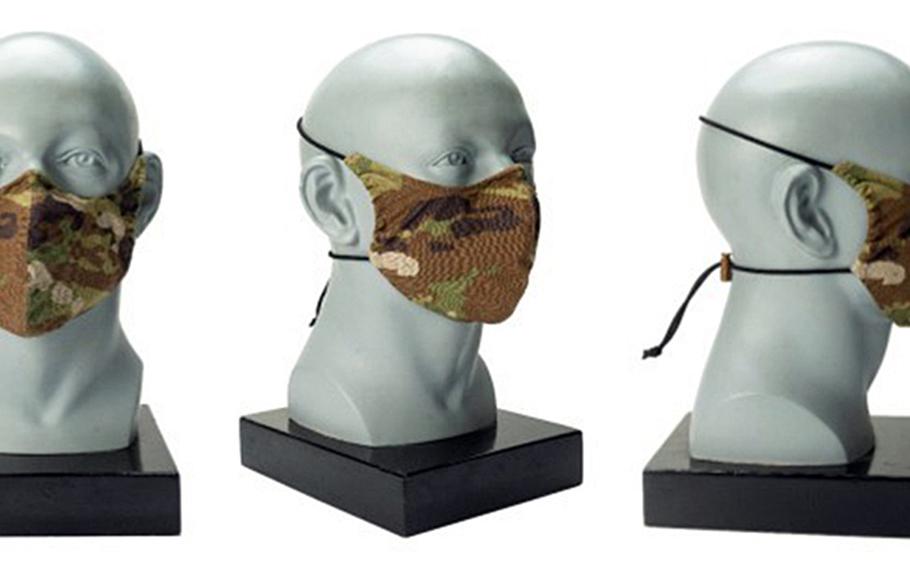
The Army's Combat Cloth Face Covering will be a 2-ply cloth covering made of 57% cotton and 43% nylon. It will have a pliable nose bridge and drawstring with a barrel lock. (U.S. Army)
Stars and Stripes is making stories on the coronavirus pandemic available free of charge. See other free reports here. Sign up for our daily coronavirus newsletter here. Please support our journalism with a subscription.
If it had taken the Army the typical 18 months to two years to roll out its official face mask, it would have been roasted on social media.
It got roasted anyway this week for announcing it would be delivered in about half that time.
The Army touted its efforts to speed the acquisition process, going “from inception to issuance” of the mask in less than a year, it said in a statement.
The Defense Logistics Agency is expected to begin issuing two Combat Cloth Face Coverings, or CCFCs, to recruits early next year.
“The Army is issuing its own official cloth face mask (complete with acronym) and bragging that it only took slightly less than a year to do,” wrote @lethalityjane, a Twitter account run by a soldier, in a tweet shared nearly 400 times.
The account, followed by more than 24,000 people, noted that unofficial alternatives have been available for months, often just off base.
But some veterans said that the process operated as it should have, with the Army providing disposable or reusable masks, allowing them to use neck gaiters, bandanas and scarves, while working to field an official mask.
“Before we freak out and call this an acquisitions failure, remember that the immediate need was met with contracting at lower levels,” wrote Aaron Leong, a former Marine. “This is the bigger, sustained, lower priority … effort for a long term change to the uniform. The system worked as designed.”
The Army and DLA have committed to contracts totaling more than $43.5 million for disposable and other cloth face masks since January, according to a Stars and Stripes analysis of contracting data on Friday.
The rollout of the CCFC doesn’t change existing guidance on the use of other face coverings, the Army statement said.
The new two-ply mask made of cotton and nylon is expected to be available for purchase at exchange stores later next year.
It doesn’t use the four-ply microfiber fabric that the service’s Combat Capabilities Development Command Chemical Biological Center tested earlier this year and found to be the most effective common material available for use in homemade masks.
After testing 300 materials, the center at Aberdeen Proving Grounds, Md., found that the polyester wipes filtered out some 75% of particles, compared to the 95% of particles filtered by N95 masks worn by health care workers and 40% filtered by a polyester bandana, the Army said in an April statement.
The microfiber cloth used in the test, which the center said could be purchased at most “big box” stores, was a Suite wipe made by Illinois-based Benchmark Products, a spokesman told Stars and Stripes in a June email.
Officials did not immediately respond to an email query about whether their testing had contributed to CCFC’s design.
garland.chad@stripes.com Twitter: @chadgarland